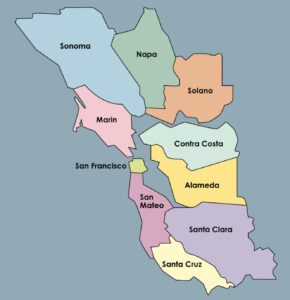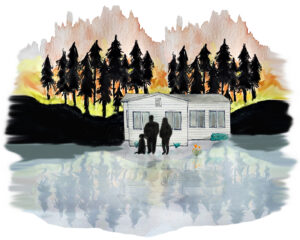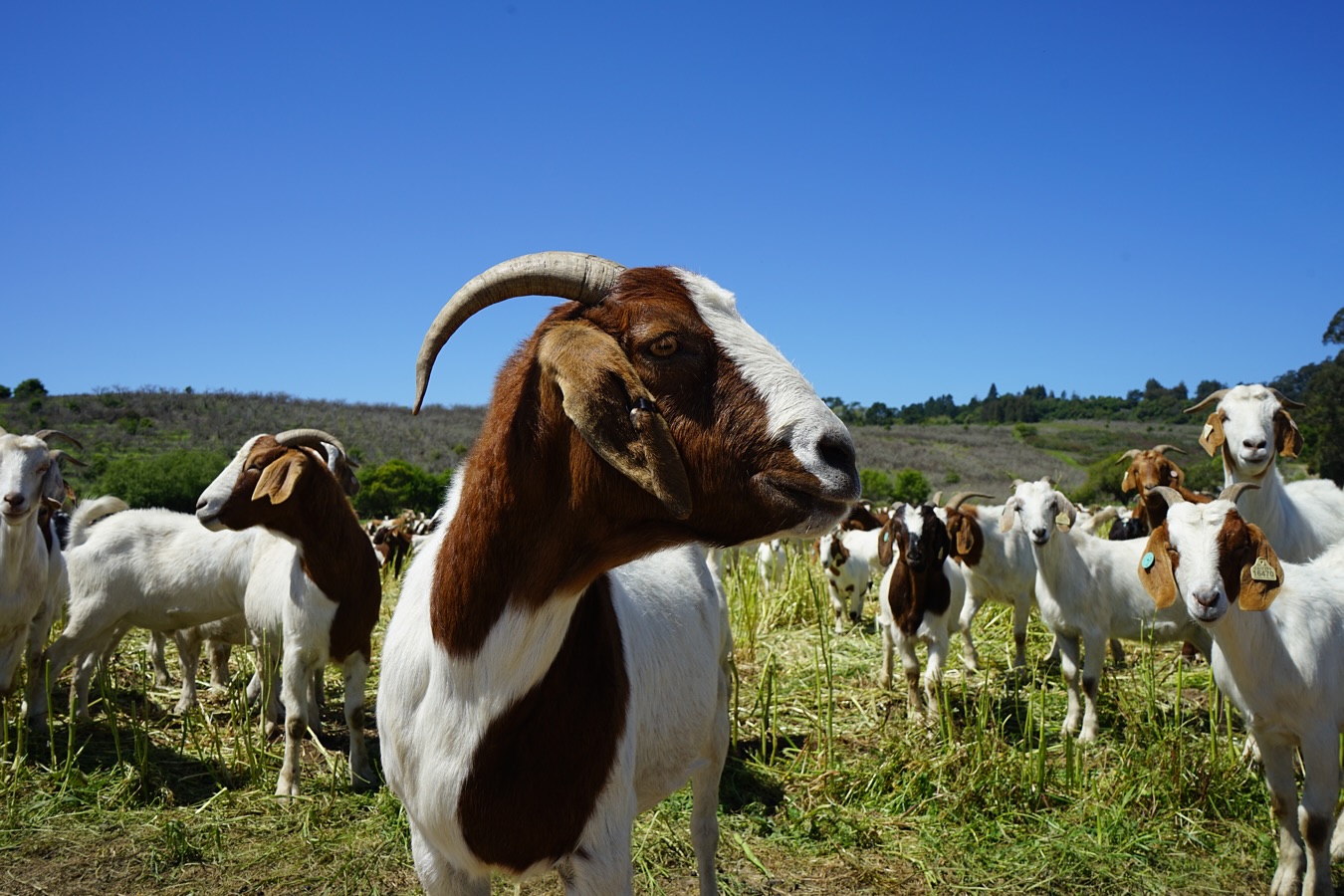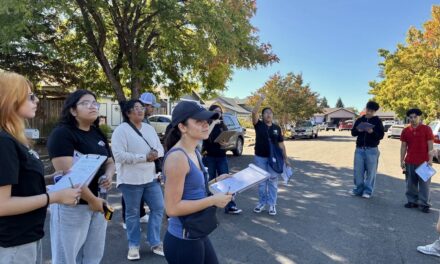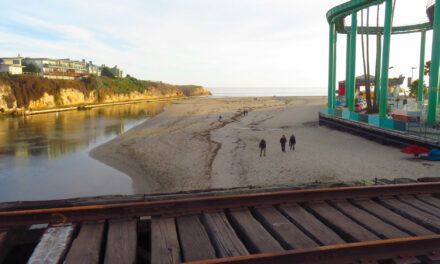The Rancher Using Goats to Fight California Wildfires
Every summer, Bianca Soares Shapero and her crew move thousands of goats and sheep across California. Their mission: eat. More specifically, eat the dry grass, thick brush, and fire-prone vegetation that surround schools, homes, and roads.
Shapero is a rancher and project manager at Star Creek Land Stewards, one of the state’s largest targeted grazing operations. She’s the fourth generation in her Basque family’s sheep business in Los Banos, rooted in the herding traditions of northern Spain. The operation started with wool and lambs but evolved into wildfire prevention.
“We run close to 7,000 animals,” she says. “They’re split into about 15 or 16 different groups, moving almost every day for six months.”
Goats, not gas-powered tools
Battalion Chief Todd Lando, wildfire mitigation specialist for the Central Marin Fire Department and president of FIRESafe Marin, works with Star Creek and other grazing crews across the region. He calls targeted grazing “probably the best and most effective and environmentally sensitive tool we have” to reduce wildfire risk.
“Goats are the best way we’ve found to mimic natural processes that used to be a part of this landscape,” Lando says. “They eat the lower limbs of trees, reduce flammable fuels, and improve tree health. Plus, they turn the vegetation into tiny pellets that don’t burn. They fertilize.”
Mechanical tools like weed trimmers leave behind flammable debris, he says, but grazing restores native grasslands and slows fast-moving wildfires.
“We’ve seen a significant reduction in wildfire hazard over the last decade because of regular targeted grazing,” he says.
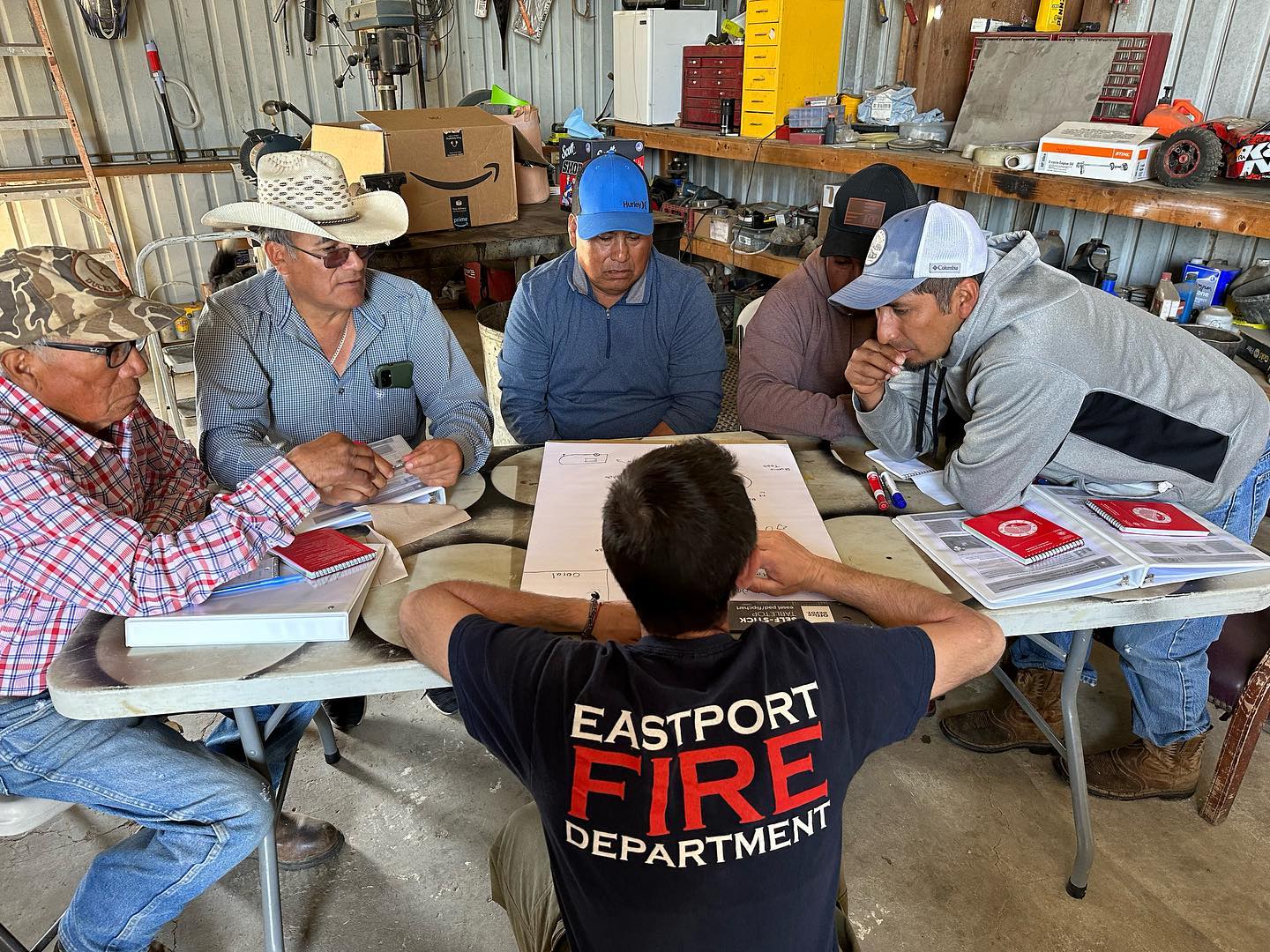
The Star Creek team meets with fire personnel. Photo courtesy Star Creek Land Stewards
Star Creek works with both public agencies and private landowners. Some clients are individual homeowners. Others are school districts, utility companies, or regional parks departments. Shapero says the work is often technical, with custom-shaped grazing zones and steep, sensitive terrain.
“We have projects that are one acre and others that are 800 acres,” she says. “These are high-risk, high-profile areas. We’re talking about putting livestock right behind people’s homes or along emergency access roads.”
One Marin County project stays with her. At the project site, two schools sit at the ends of narrow roads behind neighborhoods of several hundred people. Because evacuation isn’t possible, both schools have to shelter in place during wildfires. That makes regular grazing around them essential to keep the school kids safe. Shapero and Lando both say once you understand the risk, it’s impossible to ignore the need to do the work.
Earning their keep
In the East Bay, one of Star Creek’s herds was grazing a site last July when an illegal firework sparked a blaze before sunrise.
“We got a call from the fire crews,” Shapero says. “The fire burned right up to the fence line where we were grazing. Once it got into the area where the animals had been for just two days, it smoldered out. The fire captain said, ‘It worked.’”
Some neighbors are surprised to see goats show up in their backyards. Others don’t realize the crews are there on contract for fire prevention.
“Once you explain, they get it,” Shapero says. “They see the before and after and feel better.”
Lando agrees. “Each year when the goats return, it’s almost like a local attraction,” he says. “We’ve even had goats escape during a school graduation. People thought it was hilarious.”
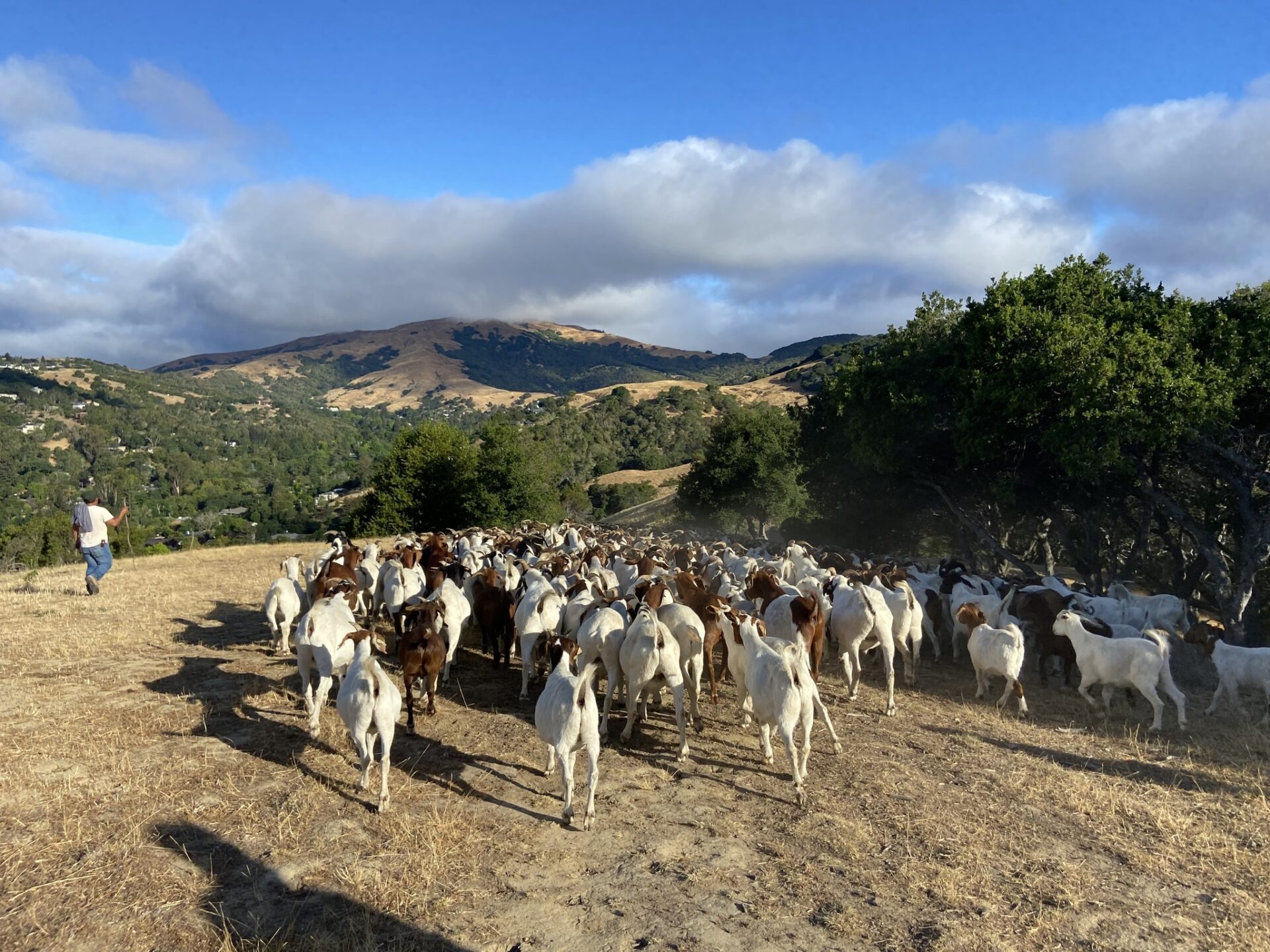
Goats from Star Creek Land Stewards graze steep Bay Area hillsides. Photo courtesy of Star Creek Land Stewards
Grazing isn’t a silver bullet. Shapero says steep brush areas may take three to five years of repeated grazing. And access can be an issue. Crews must build portable fencing, bring in water, and care for animals daily.
With fire season stretching longer each year and dry hills growing more flammable, she says the need for this work is only growing. Once you see the risk in dry brush and overgrown grass near homes, she says, “you can’t unsee it.”
MORE
- Marin Makes Clean Sweep of Forest Floors, August 2024
Other Recent Posts
Who Will Inherit the Estuary? Training for a Rough Future
The six-month program teaches students aged 17 -24 about the challenges facing communities around the SF Estuary, from Stockton to East Palo Alto.
Split Verdict Over State of the Estuary
Habitat restoration and pollution regulations are holding the Bay steady, but the Delta is losing some of its ecological diversity, says SF Estuary Partnership scorecard.
Volunteers Catch and Release Tiny Owls For Science
In Santa Rosa, citizen scientists capture northern saw-whet owls to help further research on climate impacts to the bird.
Antioch Desalination Plant Could Boost Local Water Supply
The $120 million plant opened this fall and treats 8 million gallons of brackish water a day, 75% of which is drinkable.
How Cities Can Make AI Infrastructure Green
Data centers fueling AI can suck up massive amounts of energy, water and land, but local policies can mitigate the impact.
What to Know about PFAS in Tri-Valley Water
In this nonfiction comic, explore how the city of Pleasanton is dealing with PFAS- contaminated groundwater.
ReaderBoard
Once a month we share reader announcements: jobs, events, reports, and more.

